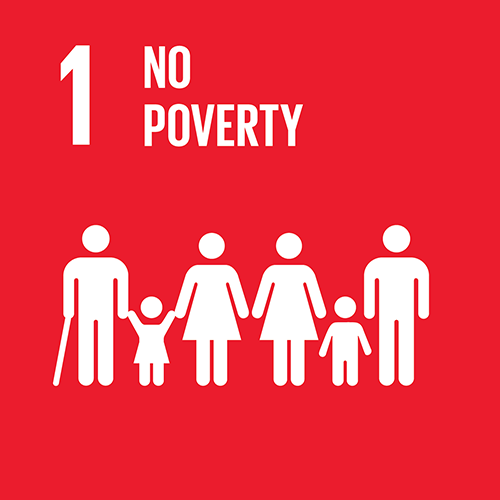Protection of Tanzanian Forests for Indigenous Peoples, Wildlife and the Climate
Project type: Land Use and Forestry
Project location: Mbulu District and Karatu District, Northern Tanzania
Project status: In operation, credits available
Annual emission reduction of the whole project: 172,359 t per year (2023)
The project ensures that indigenous land rights are secured and community land use plans are implemented by establishing forest conservation activities. Reducing deforestation prevents greenhouse gases from being released into the atmosphere and secures habitat connectivity for endangered wildlife between the Yaeda Valley and the Ngorongoro Highlands.
The Acacia-Commiphora woodland in Northern Tanzania is a particularly valuable region from a cultural, socio-economic and ecological viewpoint. The region is home to the Hadza and pastoralist Datooga communities, who comprise their core land for hunting and gathering, medicinal plant collection and important cultural and religious sites. Both communities live at the extreme end of the poverty scale within Tanzania and an income of significantly less than one USD per day. Their way of life only minimally impacts the environment as they continue their historical practices of sustainable natural resource use.
Meaningful long-term global conservation outcomes rely heavily on the willingness and ability of indigenous people to manage these precious resources.
The area is also the habitat of hundreds of bird species and several rare and threatened large mammal species such as the African elephant, Giraffe, wild dog and African lion. Unfortunately, deforestation threatens this unique ecosystem.
The primary driver of deforestation is shifting agriculture. Agriculturalists, especially from neighbouring villages, convert the woodland to cultivate maize, sunflower and foodbeans. The soil is quickly exhausted, yields decrease and the farmers move on to other areas of unconverted woodland. The secondary driver of deforestation is overgrazing by cattle and goats.
Project activities
Concrete interventions of the project include reinforcing the implementation of the approved village land use plan through the employment of patrol teams monitoring any illegal land encroachment and animal poaching, wildlife monitoring using smart technology, governance, management and financial trainings.
Further project activities include employing and training community guards to protect indigenous and endangered species from poachers, distributing educational material for schools and community meetings and trainings on legal rights.
Being able to collaborate with my community at a grassroots level is deeply rewarding. I am learning more about my community’s journey and I feel empowered to help us all move forward and improve our situation.
As communities whose livelihoods depends on the land, the Hadza and the Datooga benefit from the improved habitat resulting from project activities. Preventing deforestation, thereby preserving the natural habitat will result in a sustained supply of food, grazing and other essential items. Additionally, project activities related to enforcing the land use plan serve the purpose of protecting the watershed within the project area for the benefit of the people and wildlife.
The project participants thus benefit from increased and stable income thanks to payments for ecosystem services (PES). The carbon revenues support anti-poaching, monitoring, education and medical provisions to all members of the villages.
Without the ability to generate revenue through the sale of Plan Vivo Certificates, the communities would be unable to secure and protect the forested project area, neither legally nor practically at the community level. This in turn would likely lead to the end of these ancient societies and with it to a loss of a deep reservoir of indigenous knowledge pertaining to natural resource use.
Project and implementation partner of myclimate
myclimate works closely with the project partner Carbon Tanzania, which has set up this project “Yaeda – Eyasi Landscape” in the year 2011. Carbon Tanzania works in close partnership with the Hadza and Datooga communities to protect their community-owned forests.
Monitoring and verification of the project
The project is registered with Plan Vivo, the most rigorous standard for LUF projects. Without the ability to generate revenue through the sale of Plan Vivo Certificates, the communities would be unable to secure and protect the forested project area, neither financially nor practically at the community level. This in turn would likely lead to the end of these ancient societies and with it to a loss of a deep reservoir of indigenous knowledge pertaining to natural resource use. On a yearly base, the project is being monitored and then (every five years) being verified and audited by an independent third party. For more information, see "Documentations”.
This project contributes to 9 SDGs*
*as at the end of 2023. myclimate only finances a share of this project. The following figures relate to the impact of the entire project. Find out how myclimate reports these SDGs in our FAQ.
The following SDGs are verified by Plan Vivo:
The project creates a long-term revenue flow and income source for the indigenous Hadza and Datooga communities.
The project protects an ecosystem of 110,000 ha, the natural resource base for the hunter-gatherer activities of the Hadza and subsistence farming by the Datooga communities.
The carbon revenues support outreach clinics for trachoma and tuberculosis infections to all members of the villages.
Training and education on sustainable agricultural practices increase productivity and production and help to maintain the woodland ecosystem.
Women are employed as project officers and actively encouraged to participate at community meetings.
Community guards are employed and trained to monitor forest disruption, land conversion and illegal poaching.
The Hadza have been a marginalised community until recently. Notonly has the project strengthened their legal rights over their land, but it has also given them a voice within the region.
Sequestration of around 170,000 t CO2e per year.
Protecting endangered wildlife like elephant, wild dog or lion and over 250 bird species. Over 33,000 ha will be saved from deforestation over the next 20 years.
Situation without project
Deforestation and forest degradationDocumentations
Project standard

Project number
7223
















